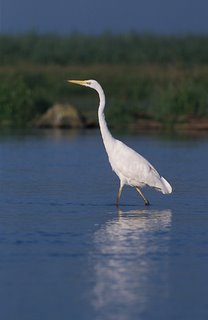 After heavy rainfalls the field here used to flood and become a two acre marshland. For days, or even weeks, flocks of egrets, ibises, cranes and Killdeers (Charadrius vociferus, named for their distinctive call) trolled the waters. Depending upon the time of year, the edges of the marsh (until recently, on the north edge, there was a 5+ acre woodland bounded by thick low brush) might be purled with yellow bellied sapsuckers and various types of migrating sparrow, nuthatch, and warbler. Each morning, from near its nest, in a high elm at the northwest corner of the property, the resident Cardinal would regale all who would take the time to listen.
After heavy rainfalls the field here used to flood and become a two acre marshland. For days, or even weeks, flocks of egrets, ibises, cranes and Killdeers (Charadrius vociferus, named for their distinctive call) trolled the waters. Depending upon the time of year, the edges of the marsh (until recently, on the north edge, there was a 5+ acre woodland bounded by thick low brush) might be purled with yellow bellied sapsuckers and various types of migrating sparrow, nuthatch, and warbler. Each morning, from near its nest, in a high elm at the northwest corner of the property, the resident Cardinal would regale all who would take the time to listen.At dusk the wood thrust sang its plaintive song from deep within the woods across the street. I used to play cassette tapes I had of various birdsongs and the wood thrush would always answer when it heard its song played.
Of course, the Blue Jay and the Starling were constant residents, marsh or no. Near the powerlines that paralleled the woodland on the northeast a Grey Jay occasionally stopped in for a visit.
It was a magical time.
 |
| To check out my book, Henry David Thoreau and Two Other Autistic Lives, click here! |
The reader may imagine my surprise, then, when a Great Egret (Casmerodius albus) began frequenting the field last month. The only permanent nesting place, in this area, for the Great Egret is located in a patch of marsh nestled between sections of nearby Lake Osborne. The lake has also been considerably "redesigned" over the past several years and I can only suspect that the avian residents are forced to look ever farther afield to maintain themselves. The grass is not cut religiously, here, and the field is probably uniquely attractive for the fact.
Our guest has since stopped once or twice a week to slowly walk the field in search, it turns out, of grass snakes. The first I saw it dine I was impressed. It shook the snake into submission and then worked it down its throat. There was some sense of indigestion as the snake visibly struggled against its fate.
The second time I saw it dine the matter was not resolved quite so easily. In an ungaurded moment, the snake managed to get its tail around the crook in the egret's throat. The egret, then, had the snake's head in its beak and the snake had the egret by the neck. All snakes are powerful constrictors for their size and the egret found itself in a terrible fix. It tried again and again, hopping to prodigious heights with the effort, to pull the snake off of its throat, desperately resting between attempts. The snake only kept the egret's beak trapped against its neck probably quite aware that its own life depended upon the success of the venture. I wondered who would win.
* * *
The difficulties of its recent dining experience did not prevent our guest from coming back. In fact, on the next occasion it brought a friend.
While I stood watching them a flurry of wings came around the corner and settled near my feet. A ring dove had landed and was trying desperately to burrow into a small stand of palmetto beside me. Just beyond it was a Swainson's Hawk (see previous post about Swainson's Hawk) also now on the ground. It was shocked to find itself only a few feet from a human being, and, there being no available updraft, it immediately lifted back off by main force, with a heavy urgency, in the opposite direction, its wingbeats slow and labored. I could hear the powerful woosh of air and snap of its wings for each beat.
That unusual experience was probably also the result of shrinking habitat. The Swainson's Hawk only rarely takes prey the size of a full-grown ring dove. It limits itself to prey that is small enough to fly away with in a pinch. Nor does it follow it to the ground around unknown corners. With more and more of the wild life in the area dying off or going elsewhere, and less and less unmolested land, the hawk may be more often forced to take whatever is available and on whatever terms. Squab, I suspect, is more often on the menu and the chances that go with it.
No comments:
Post a Comment